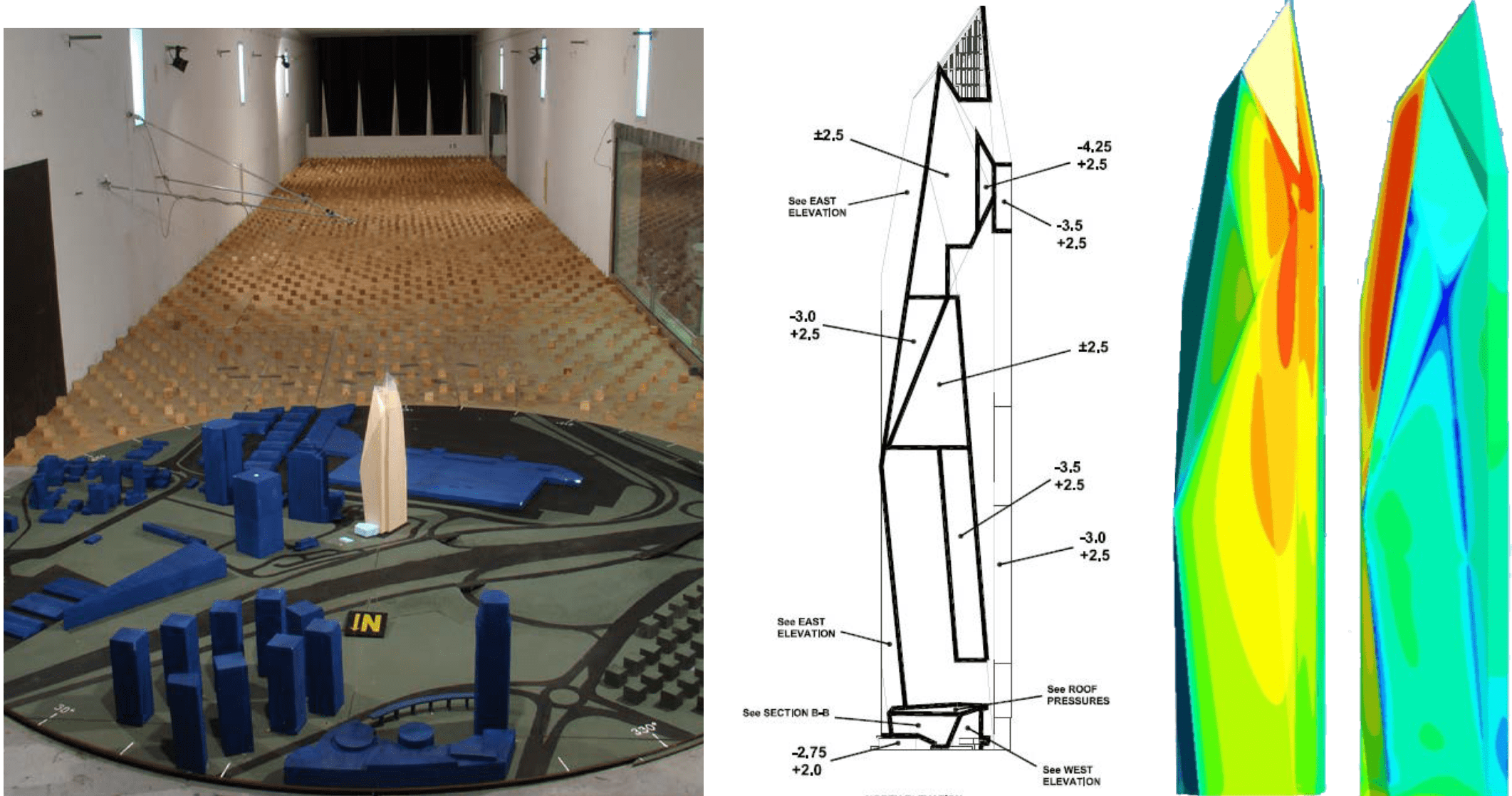Facade Wind Loading
Today, most of the buildings have curtain walls. This increases the importance of using glass / composite materials. Calculation of the wind load on the façade by regulations varying between countries due to structure height, form and surrounding structures has been excluded from analytical calculations. The most widely used standard for Turkey “TSE498” not high structures (building height, which is made of less than 30.5m) with a fairly quick calculation is enough to get a solution. Uluslararası standartlarda ise yakın coğrafyamızda en çok kullanılan dokümanın “Eurocode EN1991-4-Actions on structures-Part4” olduğu bilinmektedir. Her ülkenin buna benzer standart ve yönetmelikleri bulunmaktadır.

If calculated analytically, “0.5 * g * V2; In some cases it is enough for us to calculate the pressure value that will occur on the surface. Thus, if we assume the wind velocity value at any altitude as “V = 10” and the density of the air as “g = 1.225 kg/m3 le, we calculate that a pressure of approximately 60kg is applied to the square meter. Of course, in order to complete this process with purely analytical approaches, it is critical to know the varying wind speed in each region.

Critical situation in which the standards are not sufficient in calculating facade loads; It is problematic that the wind speed varies depending on the altitude and it cannot be predicted at what height the wind will blow due to the buildings and surrounding buildings where the calculations are made.
Therefore, the points to be considered in the analysis studies;
- Topography details,
- Surrounding structures,
- Surface roughness of the land.
Atmospheric Boundary Layer Wind Profile is defined to the boundary conditions by maintaining the entire flow volume. When the wind profile is created for analysis, the structure is exposed to wind load with angle changes of 10 with the automation developed by Alkazar. Thus, the load (positive) and suction (negative) load values that occur in 36 different directions in the facade surface are calculated. Subsequently, these loads are reported to the employer in 3D format and delivered to the building.

Thanks to computational calculation of wind load, it provides cost advantage by getting rid of the values that may be high tolerance value on the investor front. Or it can detect overloads at unpredictable points. The application firm or project managers will be presented in detail in which region the load will be critical. Thus, a report is prepared for the direct use of the facade consultants, the teams performing the calculations of the façade statics or the application side. In the delivered reports, a separate load value is calculated for each cladding zone and this detail cannot be used during the application. However, it is important to know all the risks in practice and make decisions accordingly. In this way, detailed reports increase the practice of our employers.
In the tunnel test of the studies, Alkazar is at your side with your solution partner both in determining the static loads that will affect the building core and in defining the acceleration levels that will occur with the wind load. It is important that all tunnels to be operated by the building physics provide the necessary and sufficient conditions for the atmospheric boundary layer.





